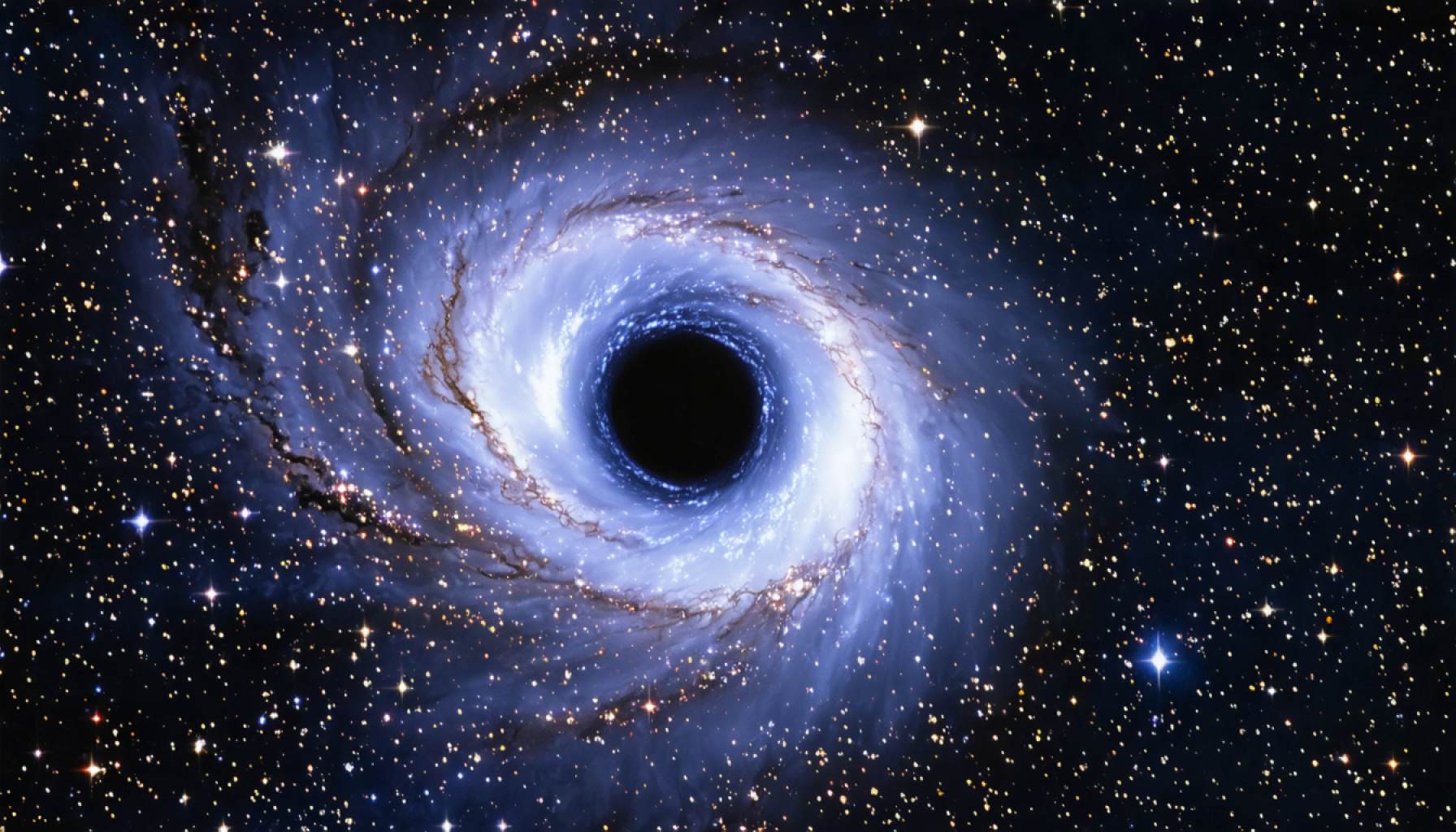- The James Webb Space Telescope (JWST) has captured a dazzling phenomenon around Sagittarius A, the Milky Way’s supermassive black hole.
- A fiery ballet of hot gas swirling around the black hole is visible, revealing unpredictable cosmic fireworks.
- These luminous events stem from magnetic turbulence within the black hole’s accretion disk, akin to cosmic solar flares.
- Shorter-wavelength flares brighten slightly before longer-wavelength ones, suggesting complex underlying physics.
- Observations promise to uncover more secrets of the galaxy’s core, revealing the dynamic splendor of this celestial marvel.
Deep within the heart of our Milky Way, a normally understated behemoth is putting on a stunning show. The James Webb Space Telescope (JWST), with its powerful gaze, has uncovered a mesmerizing spectacle around Sagittarius A, the supermassive black hole anchoring our galaxy.
Far from the silent colossus many imagine, the black hole’s surroundings are ablaze with energetic flares. Through its Near-Infrared Camera, the JWST has captured this celestial dance, revealing a fiery ballet of hot gas pirouetting around the abyss. These cosmic fireworks, both grand and minuscule, appear unpredictably, painting the cosmos with unpredictable symphonies of light.
Researchers, intrigued by these dazzling performances, describe a scene of constant motion: brief flashes of brilliance punctuated by potent bursts. Like cosmic solar flares, these luminous events are believed to stem from magnetic turbulence within the black hole’s accretion disk. Some flares, akin to a spark from static electricity, may arise from the violent clash of magnetic fields, spewing particles at nearly the speed of light.
An unexpected twist lies in the timing of these displays at two distinct wavelengths. Observed up close, shorter-wavelength flares brighten slightly ahead of their longer counterparts, hinting at underlying physical mechanisms yet to be fully understood.
These revelations promise to unlock more secrets of our galaxy’s mysterious core. As scientists eagerly await longer observation periods with JWST, they stand ready to unravel the recurrent enigmas surrounding Sagittarius A. Indeed, the heart of our Milky Way is far from dormant, its ever-changing brilliance a reminder of the universe’s dynamic splendor.
The Mesmerizing Mystery of Sagittarius A: A Cosmic Show Revealed by James Webb
How-To Steps & Life Hacks: Understanding Black Holes Through Observations
1. Grasp the Basics: Begin by familiarizing yourself with the concepts of black holes and accretion disks. Educational platforms like Nasa offer comprehensive resources.
2. Leverage Tech Tools: Use telescope data visualizations and simulations such as those provided by Stellarium or Celestia to understand the phenomena around black holes.
3. Stay Updated: Follow space research journals and NASA updates to gain real-time insights into ongoing discoveries about Sagittarius A and other cosmic events.
Real-World Use Cases: Applications of Black Hole Studies
– Space Imaging and Astrophysics: The study of phenomena like those observed near Sagittarius A aids in the development of technologies used in capturing high-resolution space images.
– Data Processing Innovations: The need to analyze huge data sets from telescopes like the JWST contributes to advancements in data science and computing.
Market Forecasts & Industry Trends
As space exploration advances, the market for space technology and software solutions is predicted to grow significantly. Investments in satellite technologies and astronomical research tools will see a rise, driven by both governmental and private sectors.
Reviews & Comparisons
– James Webb Space Telescope vs. Hubble: JWST provides unprecedented infrared imaging capabilities, offering deeper insights into phenomena like Sagittarius A, whereas Hubble operates mainly in visible and ultraviolet spectrums.
Controversies & Limitations
– Cost vs. Scientific Value: Some debate persists over the immense budget allocated to space telescopes. Proponents argue that the scientific potential far outweighs the cost.
Features, Specs & Pricing
– JWST’s Capabilities: Known for its advanced infrared capabilities, it surpasses previous telescopes with its range, reduced noise, and broader field view, essential for observing the heart of the Milky Way. More detailed specs are available on the NASA website.
Security & Sustainability
– Space Debris and Collision Avoidance: As with all satellites and space observatories, maintaining JWST involves mitigating risks from space debris and ensuring it remains functional in a harsh environment.
Insights & Predictions
– The imagery and data from JWST will progressively uncover the chemical and physical properties of the gas surrounding supermassive black holes. This could illuminate the formation and evolution of galaxies.
Tutorials & Compatibility
– Observing Tips for Amateur Astronomers: Aspiring astronomers can learn to use similar data interpretation techniques with open-source software like GNU Data Language for analyzing astronomical data.
Pros & Cons Overview
Pros:
– Unprecedented detail in infrared observation.
– Potential for groundbreaking scientific insights.
Cons:
– High operational costs.
– The complexity of data interpretation requires specialized knowledge.
Actionable Recommendations
– Join Space Enthusiast Communities: Engage with groups such as the Planetary Society or online forums on Reddit’s ‘space’ subreddit to discuss recent findings and theories.
– Monitor Upcoming Launches and Observations: Stay informed on the JWST mission timeline and other upcoming space missions through official channels like NASA’s social media.
The advancements in capturing cosmic phenomena like those seen around Sagittarius A reaffirm our universe’s wonders and complexities, beckoning ongoing exploration and learning.
For more space-related insights, visit Nasa.
